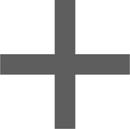July 1, 2014

If wet weather has delayed postemergence herbicide application to your soybean fields, there may be some large giant ragweed that needs treating. Mark Loux, Ohio State University, recommends using the full rate of herbicide allowed in Roundup Ready or Liberty Link fields.
“Giant ragweed populations vary in their response to glyphosate, from being fairly sensitive still to having a low level of resistance to fully resistant. Knowledge about the response of a population to glyphosate in previous years can be extremely helpful in determining how else to modify the postemergence treatment,” he says.
The lowest cost addition will generally be a group 2 herbicide (ALS inhibitor) such as Classic or FirstRate, but many populations have developed some resistance to group 2 herbicides. Loux says to be sure that the population still responds well to group 2 herbicides before going this route.
“The more effective choice in many fields will be a group 14 herbicide (PPO inhibitor) such as Flexstar or another fomesafen-containing herbicide, or Cobra,” he says.
OSU research generally shows fomesafen to be more effective on ragweed than Cobra, although Cobra can be applied later in the season. Where two postemergence applications are planned or might be necessary, we usually add fomesafen to glyphosate in the first application, and save the option of using Cobra in the second application. Cobra and fomesafen can be applied up to 45 days before soybean harvest. Late-season applications of fomesafen have at least some potential to persist into the following season and affect corn. This has occurred only rarely in Ohio, and primarily where late-season application has been followed by dry weather. Products containing fomesafen include Flexstar, Rhythm, Reflex, Dawn, Marvel, Prefix, Vise, Torment, and a few other generic equivalents of Flexstar and Reflex.
“From our perspective, the approach taken with regard to rates and adjuvants used in combinations of fomesafen or Cobra with glyphosate fall into three categories based on the sensitivity of the giant ragweed population to glyphosate,” says Loux.
1. Population is sensitive to glyphosate. It is possible to use just a high rate of glyphosate in fields where the giant ragweed has not lost sensitivity. There can be a benefit to adding fomesafen or Cobra for control of large ragweed, especially if the field will definitely not be treated again. Making a second glyphosate application in about 3 weeks can improve control where plants emerge later or are not controlled by the first application.
2. Population has lost some sensitivity to glyphosate (low level resistance). These are fields where a glyphosate application still controls many plants and the rest turn yellow and are stunted (initial control of 75% or higher) but eventually regrow. The addition of a fomesafen product or Cobra can greatly improve control of these populations, but there is some flexibility in rate, adjuvants, etc, depending upon how much help the glyphosate needs. Following the approach outlined in #3 below is certainly one option, but it is possible to use less than maximum rates of fomesafen or Cobra, and rely on the surfactant that is in glyphosate products instead of adding oil. It’s also possible to use a premix such as Marvel that contains a lower rate of fomesafen, or less than maximum rates of Flexstar GT.
3. Population is glyphosate-resistant - a glyphosate application provides essentially no control or causes “rapid necrosis” (contact burn) on leaves. The fomesafen or Cobra will provide all of the control in this situation, so use the appropriate rate and adjuvants to maximize their activity, along with a spray volume of at least 15 gpa and nozzles that optimize contact herbicide activity. The surfactant in the glyphosate will not be adequate, and COC or MSO should be added. When using Flexstar GT, use the higher labeled rates and add MSO or COC along with AMS. Premix products that contain lower rates of fomesafen or do not specify use of an oil adjuvant in mixtures with glyphosate (eg Marvel) are not appropriate for glyphosate-resistant populations. Make a second application of Cobra about 3 weeks after the first if needed for late-emerging plants or plants that regrow after the first postemergence application.
Read the story from Ohio State.
 You might also like:
You might also like:
Are farm land values headed for a downturn?
You May Also Like




